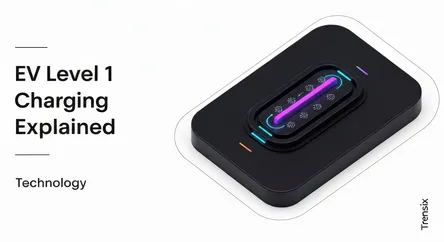Technology
EV Level 1 Charging Explained

Discover Level 1 charging, the most accessible way to power your EV using a standard household outlet. Learn its speed, benefits, and limitations.
What is it?
Level 1 charging is the most basic and widely accessible method for charging an electric vehicle (EV). It utilizes a standard 120-volt household outlet, the same kind you use for a lamp or laptop. The charging equipment is typically a simple cordset that comes with the vehicle. Because it uses a low-power connection, it's also the slowest charging method, adding roughly 2 to 5 miles of range per hour. Often called "trickle charging," it requires no special installation, making it a convenient option for anyone with access to a standard wall socket.
Why is it trending?
With the surge in EV adoption, Level 1 charging is trending as the default entry point for new owners. It's the simplest and most cost-effective way to start charging at home immediately without the expense of hiring an electrician to install a dedicated Level 2 charger. For drivers with shorter daily commutes or for plug-in hybrid vehicles (PHEVs) with smaller batteries, overnight Level 1 charging is often more than sufficient to replenish the battery for the next day's use, highlighting its practical application for a significant portion of the EV market.
How does it affect people?
Level 1 charging offers EV owners ultimate convenience and accessibility, turning any standard outlet into a potential fuel source. This eliminates the need for immediate, costly electrical upgrades. However, its slow speed can be a major drawback for drivers with long commutes or those who need a quick recharge. It forces a reliance on overnight charging schedules and can be impractical as a primary solution for battery-electric vehicles (BEVs) with large batteries. This limitation underscores the importance of public fast-charging networks for long-distance travel and for drivers without consistent overnight access to an outlet.